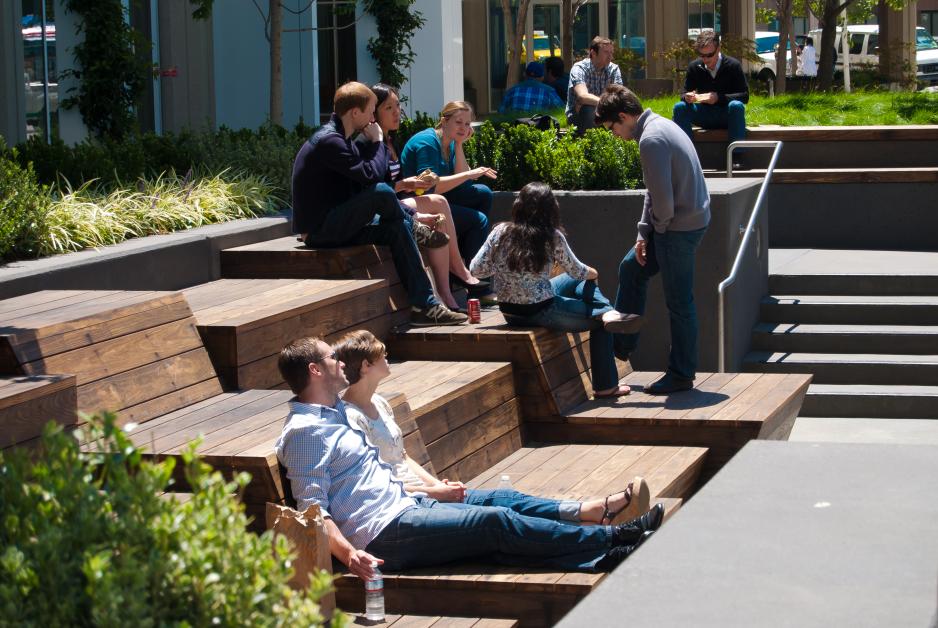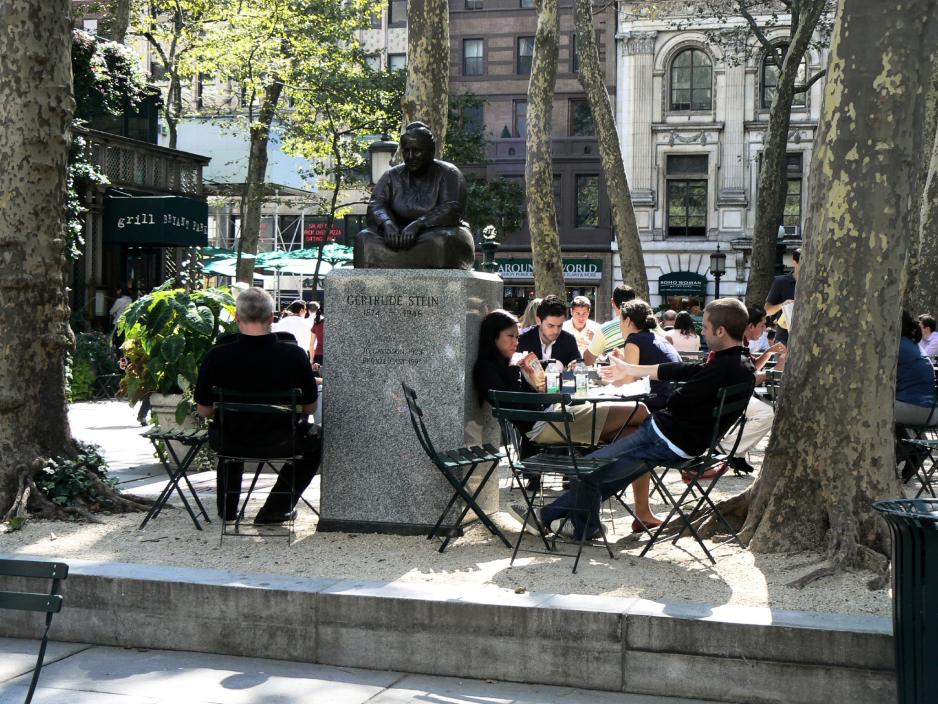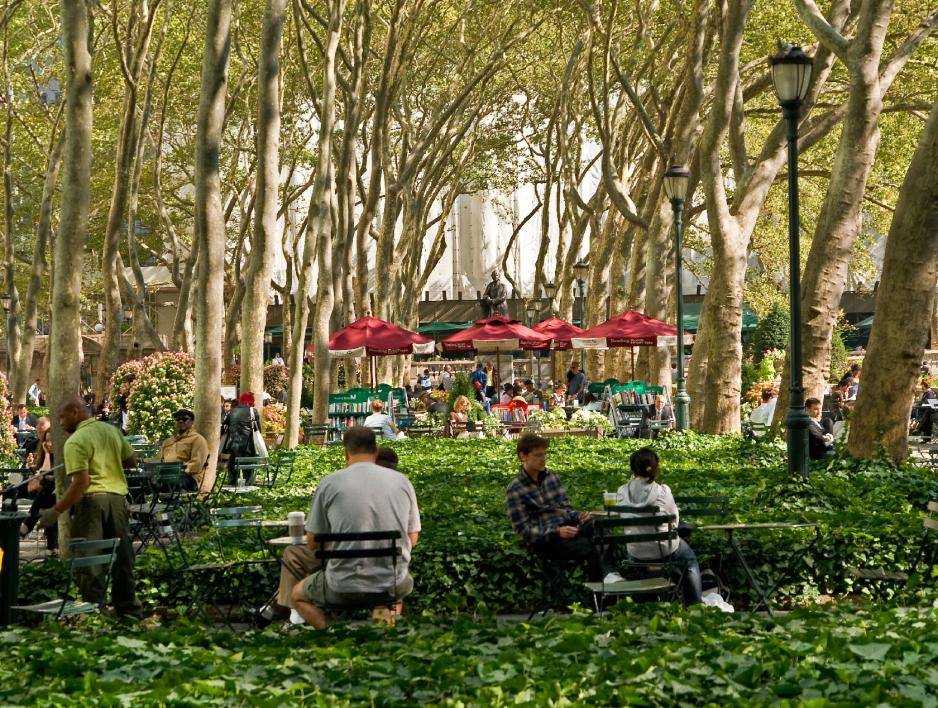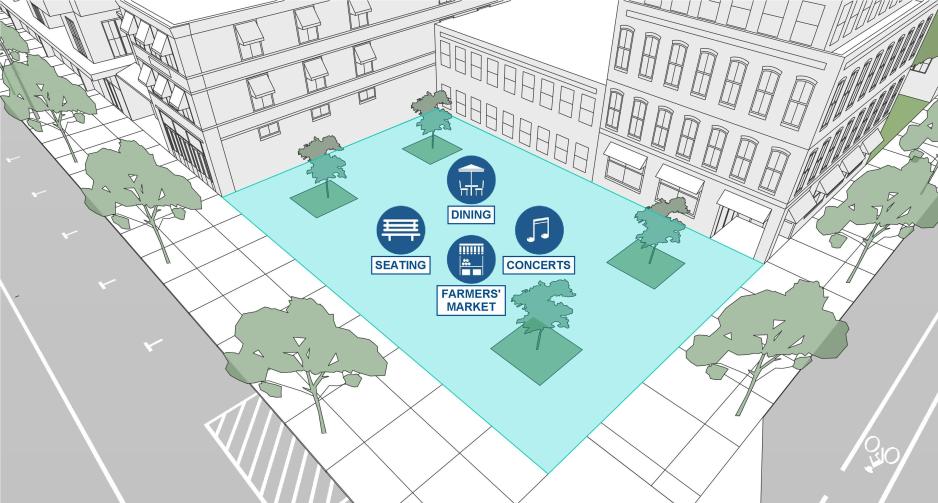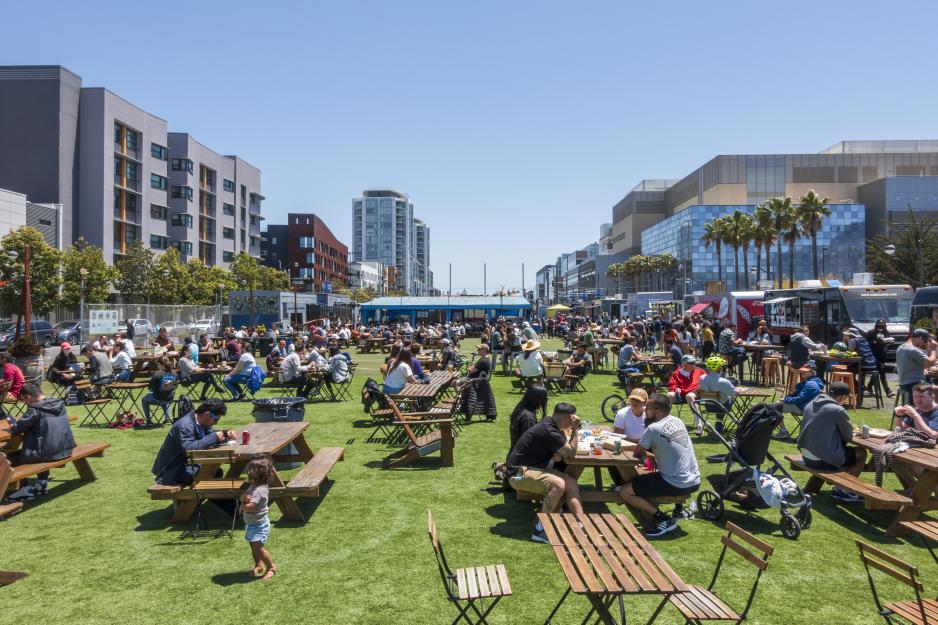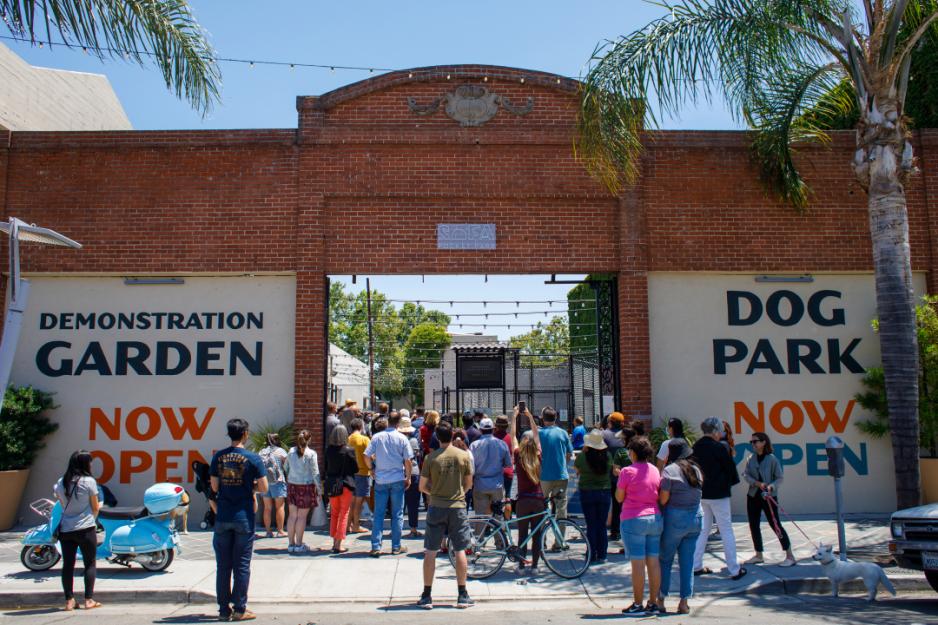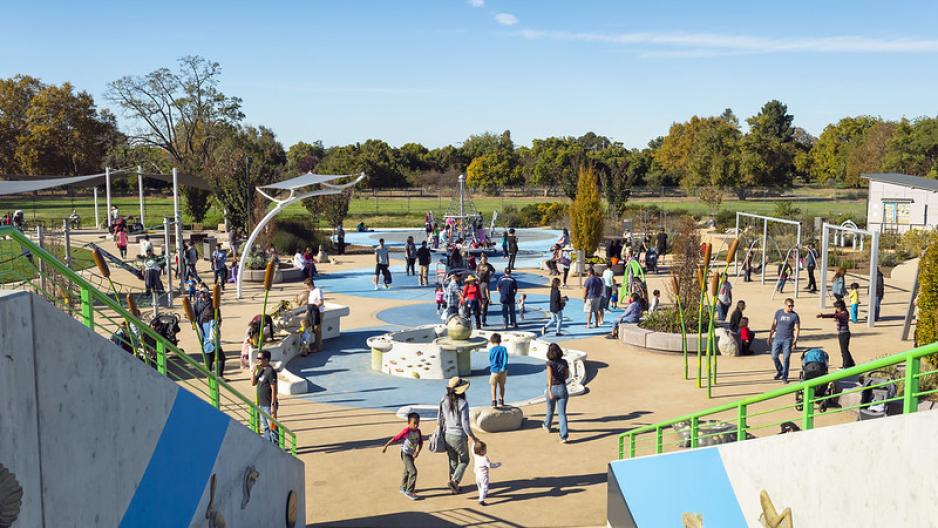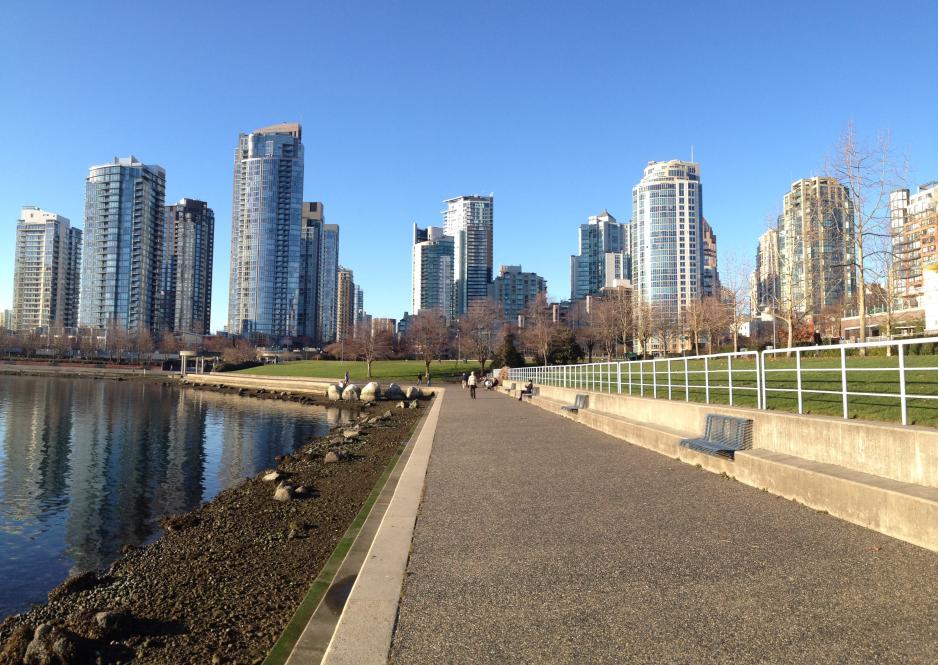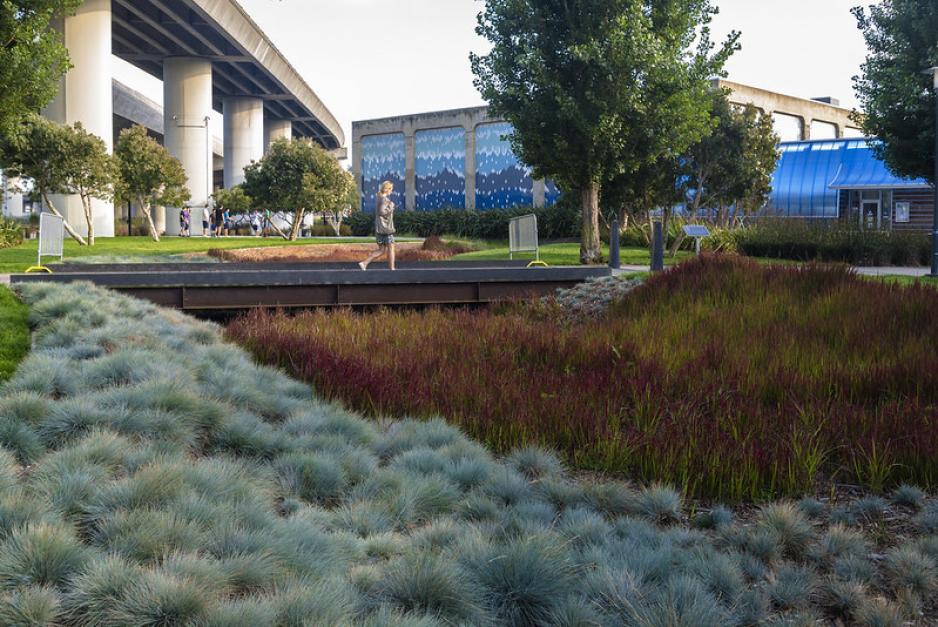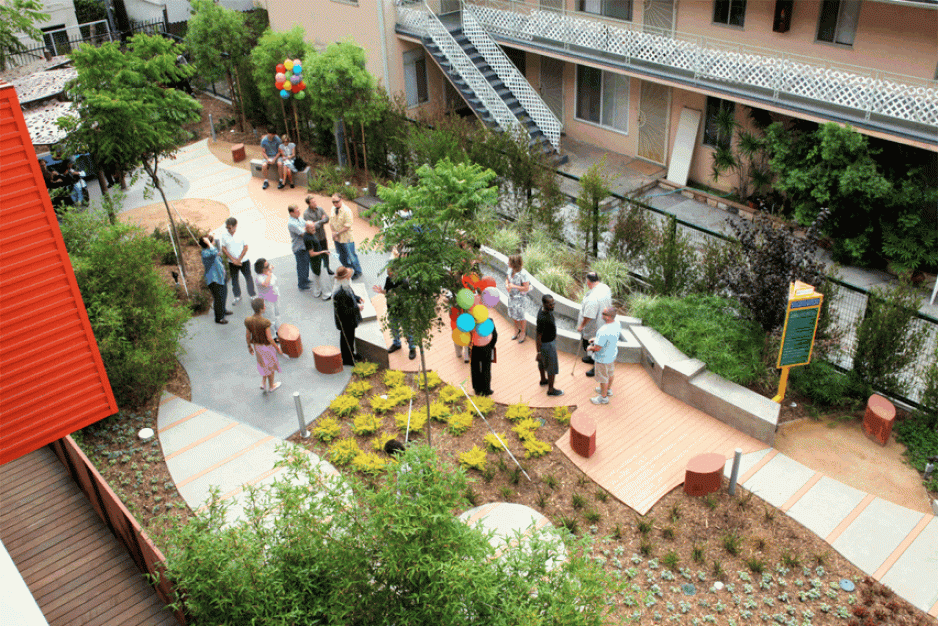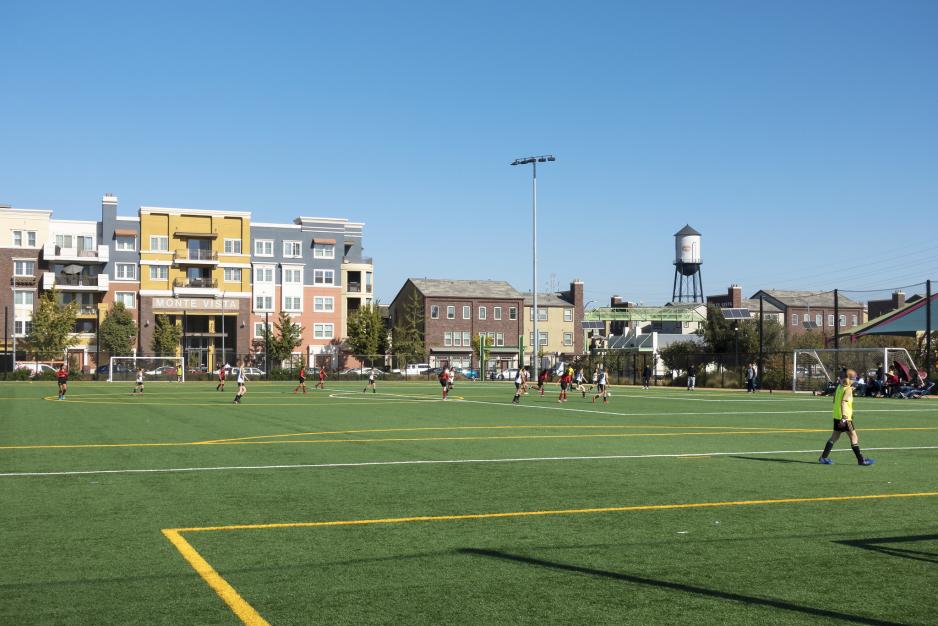Ensure open spaces are designed to foster community interaction and enhance livability.
Design open spaces with human-scale elements for comfort.
- Provide a variety of seating choices for individual seating or groups. Some seating should be fixed while other seating may be flexible to accommodate groups of varying sizes and preference for shade or sun.
- Use public art to provide scale. This strategy is particularly useful in urban areas near multi-story towers to provide a more relevant scale to pedestrians.
- Use overhead canopies to provide comfort and scale. Canopies may be provided through the use of trees, shade sails, awnings or other man-made structure. Canopies may also provide an opportunity for public art and contribute to community identity.
Ensure open spaces are sized relative to their context.
Size open spaces based on their intended programming. Parks that are larger than needed for their intended programming can be difficult to manage and operate effectively.
Size open spaces in urban areas to fit within the urban pattern, contribute to walkable neighborhoods and provide programming for recreation, play and social gathering.
Design for flexible or multi-function public open spaces that allow for varied programming. Provide amenities and facilities in open spaces that respond to user needs.
- Provide plazas in urban areas that are designed for enjoyment, lingering and encourage gathering for special events. Typical plaza uses are temporary markets, art installations, performances, small group gathering, children's play areas, personal relaxation.
- Include community-supported and enhancing open spaces such as orchards and vegetable gardens, outdoor event spaces, and rooftop terraces.
- Provide infrastructure to support intended programming such as needs for power and water.
Ensure safe, legible, and visible public access to open spaces. Make open spaces accessible for all.
Enhance and incorporate natural features such as rivers, creeks, and wetlands into the open space design where feasible.
Complement public open spaces with a mix of semi-public, semi-private, and private open spaces in new developments.
Open spaces may be public, or publicly accessible private spaces but should be accessible from the public realm and located close to transit or other pedestrian centric destinations where possible.
